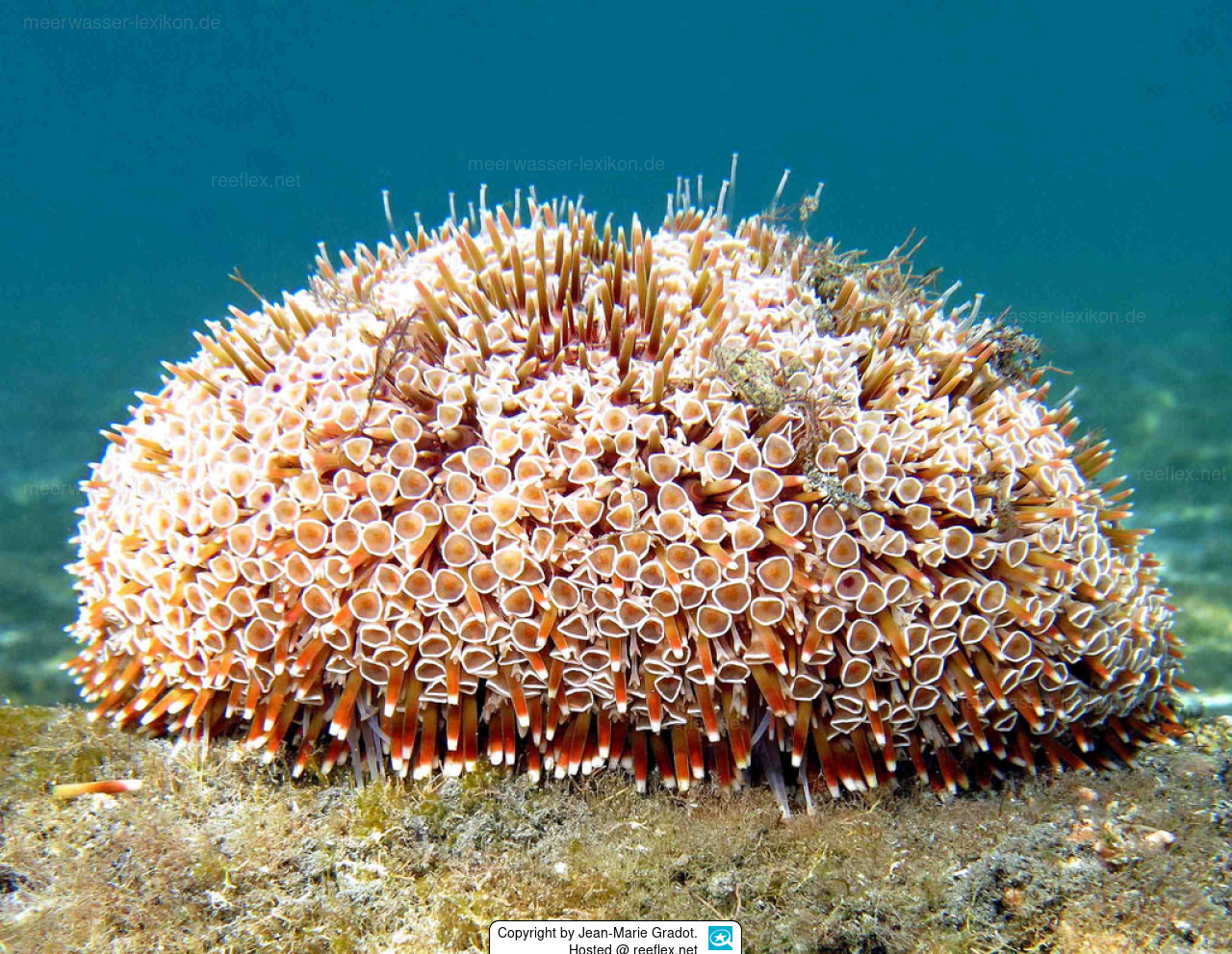Info
(Lamarck, 1816)
Extreme toxic, handle with care!
Best left in the wild!
Synonyms:
Boletia heteropora L. Agassiz & Desor, 1846
Boletia pileolus (Lamarck, 1816)
Boletia polyzonalis (Lamarck, 1816)
Echinus pileolus Lamarck, 1816
Echinus polyzonalis Lamarck, 1816
Toxopneustes (Boletia) pileolus (Lamarck, 1816)
Toxopneustes chloracanthus H.L. Clark, 1912
Extreme toxic, handle with care!
Best left in the wild!
Synonyms:
Boletia heteropora L. Agassiz & Desor, 1846
Boletia pileolus (Lamarck, 1816)
Boletia polyzonalis (Lamarck, 1816)
Echinus pileolus Lamarck, 1816
Echinus polyzonalis Lamarck, 1816
Toxopneustes (Boletia) pileolus (Lamarck, 1816)
Toxopneustes chloracanthus H.L. Clark, 1912







 Jean-Marie Gradot, La Reunion
Jean-Marie Gradot, La Reunion



















